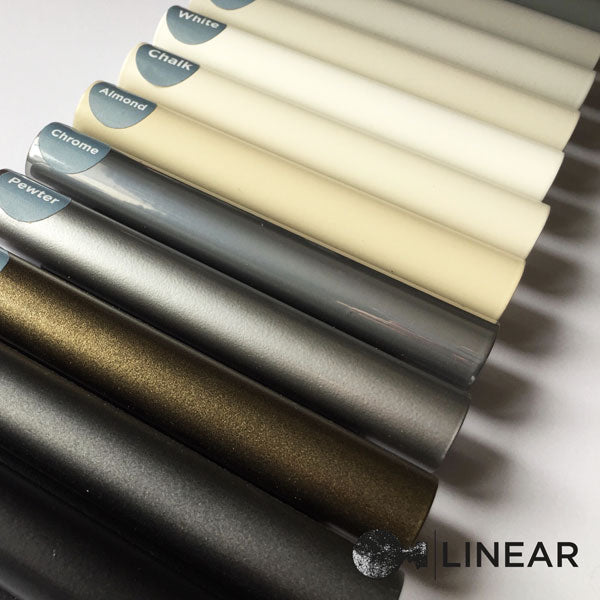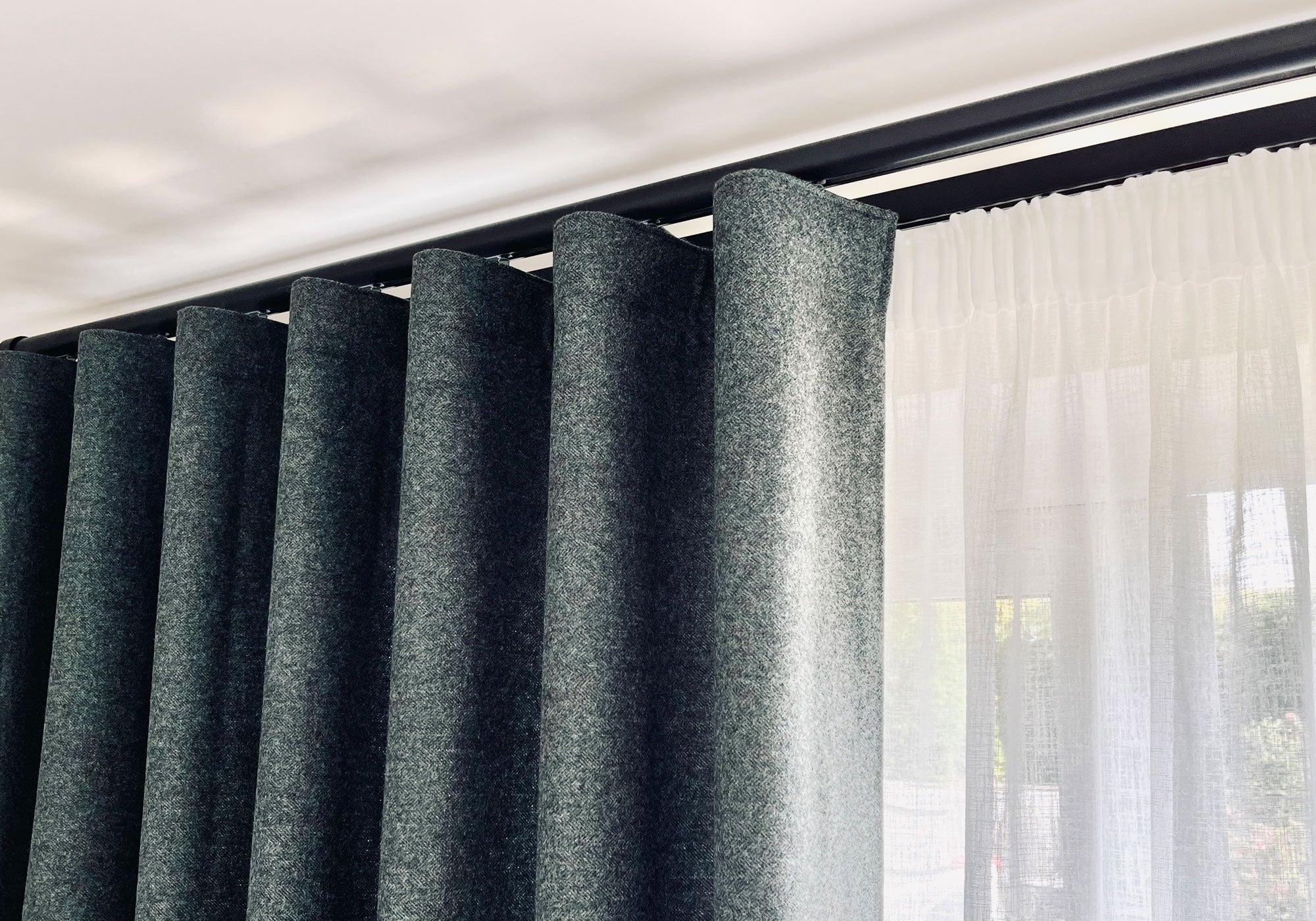What Are Wave Curtains?
Wave curtains (sometimes called “wave heading” or “ripple fold” curtains) originally used a special flat tape and glider-cord system so that, when drawn, the curtain falls in smooth, continuous S-shaped waves rather than pleats or gathers. However, there are now other heading tapes available which can create the wave effect without the need for specialist gliders.
The result of the wave headed curtains is a sleek and contemporary look, with more uniform folds and a minimalist appearance.
Generally wave headed curtains have to be made to measure in order to function effectively and have the desired appearance.
Why Choose Wave Curtains? (Pros & Benefits)
Here are some of the key advantages—and a few caveats—to consider.
|
Pros |
Cons / Challenges |
|
Clean, modern aesthetic. The waves are elegant, uniform and contemporary. |
Requires more precision in manufacture—less forgiving than standard headings. |
|
Minimal stacking and a more compact appearance. |
Some fabrics are unsuitable (e.g. stiff fabrics, heavy embroidery) (Silent Gliss) |
|
Easy to “dress” and maintain the wave shape once fitted. |
Weight limits may apply (check track / glider specs) (Silent Gliss) |
|
Compatible with both hand-drawn or corded (or even electric) curtain tracks in many systems. |
More complex calculation of hooks, tape, spacing etc. |
|
Can be used behind pelmets, straight or in bays (with curved tracks) |
You’ll need a compatible track + glider system depending on which heading tape is used. |
So, wave curtains are excellent when you want a clean, streamlined look, provided you are prepared to do the measuring and specification carefully.
The Track & Glider System: What You Need
A wave heading system isn’t just about the curtain fabric — you need a compatible track and gliders for the heading tape you opt for in order to achieve the wave effect. Our Cameron Fuller Square30 and Round38 tracks, which are compatible with the original wave type heading — but with a condition: they require Surf60 or Surf80 gliders (i.e. glider spacing at 60 mm or 80 mm).
Those gliders (Surf60 / Surf80) are what enable the wave folding. The track must allow the gliders to slide continuously. The “Surf” designation signals compatibility with wave systems.
Some tips on track choice:
- Straight vs. bendable: Square30 offers a bendable option (so you can bend it on site) in addition to straight track.
- Ceiling fix / face fix: You can fix the track to the ceiling or the wall/face as needed. Square30 supports neat direct ceiling fixing without brackets. If you opt for wall fix, Surf80 gliders will require adjustable brackets with a larger projection.
- Load capacity: Always check the track’s load capacity; wave heading tape itself often has a limit (for example, Silent Gliss wave tapes are limited to ~2.5 kg per metre in their standard form) (Silent Gliss)
- Joining lengths: For long spans, tracks can be joined; for example Round38 tracks over 3.6 m may come in joined sections.
Choosing Between 60 mm and 80 mm Spacing
This is a key decision for appearance and functionality:
|
Feature |
60 mm |
80 mm |
|
Wave depth |
Shallower, tighter waves |
Deeper, more dramatic waves |
|
Number of gliders/hooks |
More required (denser) |
Fewer required |
|
Stack-back / space in front / behind |
Slightly more stack depth since more folds |
Less stack depth, but more forward/back space needed for deeper waves (consider the bracket projection) |
|
Visual effect |
More subtle, more waves |
Bolder folds, more sculptural |
If your window recess is shallow, or you have limited side clearance, 60 mm may be safer. If you want a more luxurious wave effect and you have space, 80 mm is often preferred. Many wave system guides (e.g. Silent Gliss) use 80 mm + pocket factor 7 for their standard recommendation. (Silent Gliss)
Tips & Best Practice
- Fabric choice matters: Soft drapery fabrics, medium weight, and ones with fluid drape work best. Stiff or heavily textured fabrics may not form smooth curves. (Silent Gliss)
- Training the waves: After hanging, you’ll want to coach the fabric by manually pushing the first wave fold forward, the next backward, and so on. This helps “set” the wave rhythm. (Silent Gliss)
- Avoid overloading: Don’t exceed track or tape weight limits.
- Ensure clearance: The wave curves protrude slightly; ensure the track is far enough from the wall or window frame to allow the folds.
- Check glider spacing carefully: Mistakes in spacing or hook placement lead to uneven waves.
Summary
Wave curtains are a sophisticated, elegant way to style windows, delivering smooth, continuous, uniform folds. To get them right, precision in specification is crucial: the track, glider spacing, hook spacing, and tape must all align.


